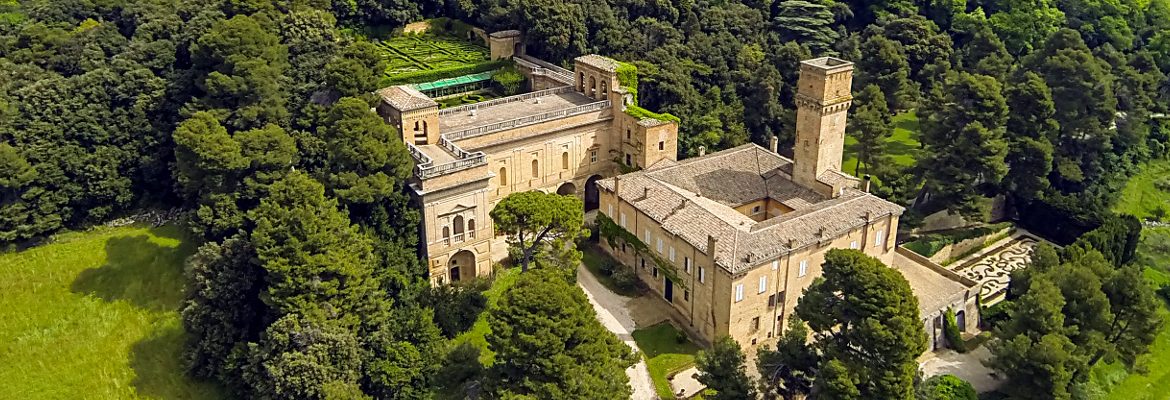The name “Villa Imperiale” literally means “Imperial villa”. A magnificent example of a Renaissance residence in the Mannerist style, the villa is located right in the heart of the San Bartolo Park. The architectural complex was built in two distinct phases. The first phase dates back to the second half of the 15th century, when Alessandro Sforza commissioned, probably to Laurana or to Giorgio di Matteo from Sebenico, the construction of a defensive dwelling where it would have been possible, nonetheless, to devote oneself to leisure and to the take care of one’s soul. The villa carries the name “ Imperiale” because its first stone was laid in 1468 by Emperor Frederick III of Hasburg himself, while he was hosted in Pesaro by Alessandro Sforza during his second trip to Italy.
The transformation into an exclusive villa of delights, hence the second phase of construction, took place under the ruling of Francesco Maria I Della Rovere. Having regained the Duchy following the death of Pope Leo X, Francesco commissioned to the prestigious architect Girolamo Genga the addition of a new complex and the conversion of the residence into the perfect set for courtly life, thus having to fulfill the typical functions of the Renaissance court. Construction works were completed around 1541. They were carried out under the supervision of Alessandro’s wife, Eleonora Gonzaga, who commissioned Pietro Bembo to compose the texts of the inscriptions decorating the external façade and main courtyard of the villa. As part of his intervention, Genga raised the watchtower and reinforced some of the loggias of the Sforza courtyard; he also took care of the interior decorations of the villa, appointing a number of prestigious artists of the time, such as Dosso and Battista Dossi, Raffaellino del Colle, Bronzino, Camillo Mantovano and others.
The domain of Villa Imperiale stretches through a four-level terraced field, in harmony with the natural slope of the hill on which it is located. Walls surround the propriety. The upper levels are mainly gardens, which are then surrounded by over 35 hectares of forest. The structure of these gardens reflects common taste during the Renaissance, with an abundance of fragrant and precious arboreal essences such as laurel, myrtle, rosemary, together with boxwood, vines, cedars, lemons and oranges. The two lower levels of the gardens were considered the area where courtly life had to take place. Over the years, they surely hosted many writers and artists, including Tiziano and Pietro Aretino, Torquato Tasso, Baldassarre Castiglione and Pietro Bembo. In one of his writings, Pietro Bembo describes the villa as “conducted with true science of art, and in ancient ways and through beautiful and graceful inventions, both of which seem to have been made modern”.
The structure, emerging little by little amidst the vegetation, wonderfully expresses his designer’s desire to form a perfect symbiosis between the villa and its surrounding. Evidence of this are the many paths and trails connecting Villa Imperiale to the other Roveresque villas through the woods.




